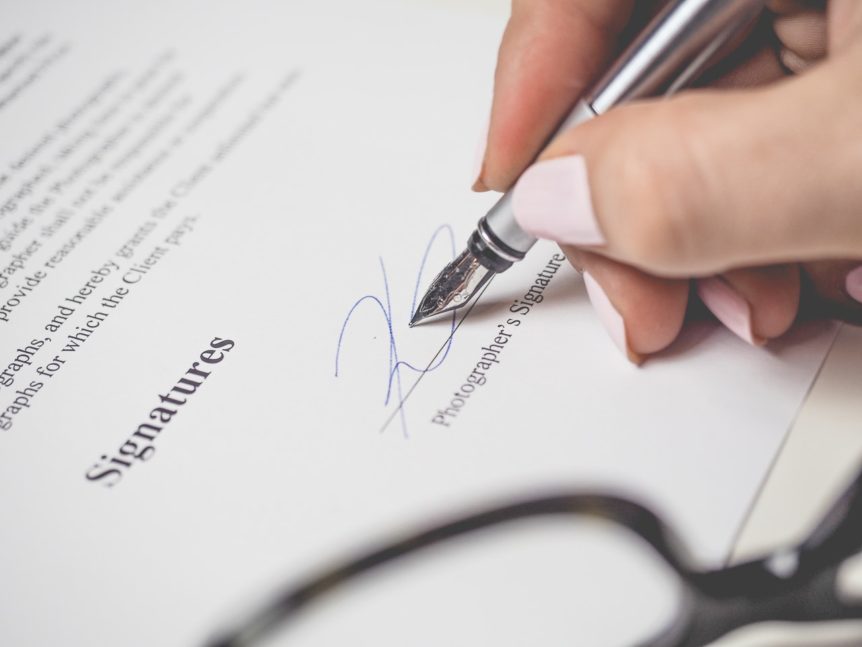If you thought that Non-Disclosure Agreements, or NDAs as they are popularly called, were reserved for celebrities, well, you thought wrong. They are an essential piece of legal documentation for anyone who wants to keep certain aspects of their professional or personal life private.
Signatories to NDAs have to pay-up hefty amounts in damages if they break the terms of the contract, by disclosing information that should have otherwise remained private.
People often use the terms “NDA” and “confidentiality agreement” interchangeably, but in reality, they are not the same.
So, what is the difference between them? And, what happens if you violate the conditions set out in the contracts? Here’s everything you need to know.
Confidentiality Agreement vs NDA – What’s the Difference?
A Confidential Disclosure Agreement (CDA) (or confidentiality agreement for short) is essentially the same thing as a Non-Disclosure Agreement in terms of what each of them does.
The idea behind their creation is to protect private information from leaking into the public domain. The difference between them comes in the context where they’re used. Let’s explore each of them in more detail.

What Is a Confidentiality Agreement?
A CDA is a written legal contract that lays out a series of binding conditions that prevent an individual from disclosing confidential information. These types of agreements are commonly used, where a higher degree of secrecy is required.
It’s not enough to simply “not disclose” information; you have to actively ensure that the information in question remains a secret. It may involve activities that revolve around:
- Placing restrictions on how the information in question can be used
- Protecting databases
- Preventing employees from stealing information
- Ensuring that subcontractors are also bound by the same CDA
… and several other proactive steps.
CDAs are more frequently used in employment situations, particularly where the public disclosure of certain commercially-sensitive information would lead to a monetary loss of some kind.
They can also be used in personal situations where leaked sensitive information could end up damaging an individual’s reputation and public perception.
What Is a Non Disclosure Agreement?
An NDA is also a legally binding agreement that compels signatories to keep specified information a secret. These are more commonly used in business, startup, or third party situations. A third party could be a vendor, supplier, customer, or even a potential investor.
NDAs are generally used to protect trade secrets, patents, inventions, intellectual properties, pricing arrangements, or any other type of financial information.
Non-disclosure agreements are commonly used when the obligation to keep certain information is unilateral (or one-way).
On the other hand, if the exchange of secrets or any other kind of sensitive information is multilateral, then a confidentiality agreement would be more applicable.
Elements of Confidentiality Agreements and NDAs
Although there are subtle differences between confidentiality and non-disclosure agreements, they all function on the same basic principle – to keep certain pieces of information a secret, by never divulging it to third parties.

Regardless of the type of information these agreements protect, they all have the same basic elements.
1. Definitions and Exclusions
These establish the types and categories of information covered by the agreements in question. This section spells out the subject/rules/consideration of the contract without actually releasing the specific information involved.
So, if you run a boutique that carries exclusive designer-wear, for instance, the agreement would have a clause that reads something along the lines of:
“… The confidential information protected by this agreement includes innovative processes, sales figures, inventory, financial and credit information, and customer lists …”
CDAs and NDAs will also often contain exclusions to information that would not need to be kept a secret. This would encompass information that’s already considered common knowledge at the time of signing the contract.
2. Obligations From Involved Parties
Both confidentiality and non-disclosure agreements explicitly state that the signatory to the contract has to keep the information in question a secret.
It means that you cannot disclose it, encourage other parties to violate the terms of the agreement, nor allow parties not privy to the information to access it through methods that would be deemed improper or unconventional.
All these would be tantamount to a breach of confidentiality – in which case you would be liable for damages.
3. Duration of Contractual Obligation
The final element is the period during which the agreement is in force. In most cases, the agreements are usually binding for a specific number of years, whether or not you’re involved in direct dealings with the parties in question at that time.
So, if you divulge a trade secret long after you officially left the company that issued the CDA, before the period that the agreement is in force elapses, your actions would be a violation of confidentiality. You would, in turn, be held liable for the damages that result thereafter.
Violating Non-Disclosure Agreement – Legal Ramifications
A breach of confidentiality opens up a can of worms in claims that could cost you a lot more than you bargained for if you are the offending party. If, on the other hand, someone breached the terms and conditions of an NDA you issued, some of the claims you can file to hold them accountable include:
- Breach of contract
- Copyright infringement
- Trade secret misappropriation
- Unfair competition
Nonetheless, the burden of proof lies with you to show that the other party violated the agreement and the resulting damages you suffered. The widely-publicized Nick Sandmann lawsuit is the perfect example of what could happen if any of the signatories to a confidentiality agreement violates its terms.
Sandmann, the teenager at the center of a viral video of him in an apparent confrontation with a Native American activist, allegedly received a $250 million settlement from The Washington Post, over its botched coverage that took the entire incident out of context.
The details of the defamation settlement were to remain a secret based on the terms of the confidentiality agreement signed by the parties involved in the suit. However, Brian Stelter, CNN’s chief media correspondent, could now be facing a lawsuit for breaching the network’s CDA when he divulged the settlement figure – whether true or not.
Secrets Are Meant to Be Kept
What’s the difference between a confidentiality agreement and an NDA? Not much. It all boils down to the context in which they are issued and how many parties are involved.
Non-disclosure agreements are used when the obligation to keep information secret is unilateral, while confidentiality agreements are used when multiple parties have to keep the multilateral exchange of secrets confidential.
Keep in mind that a violation of confidentiality carries with it some pretty hefty legal ramifications. So, think twice before you divulge private information to third parties, particularly if you’ve signed an NDA or CDA.
